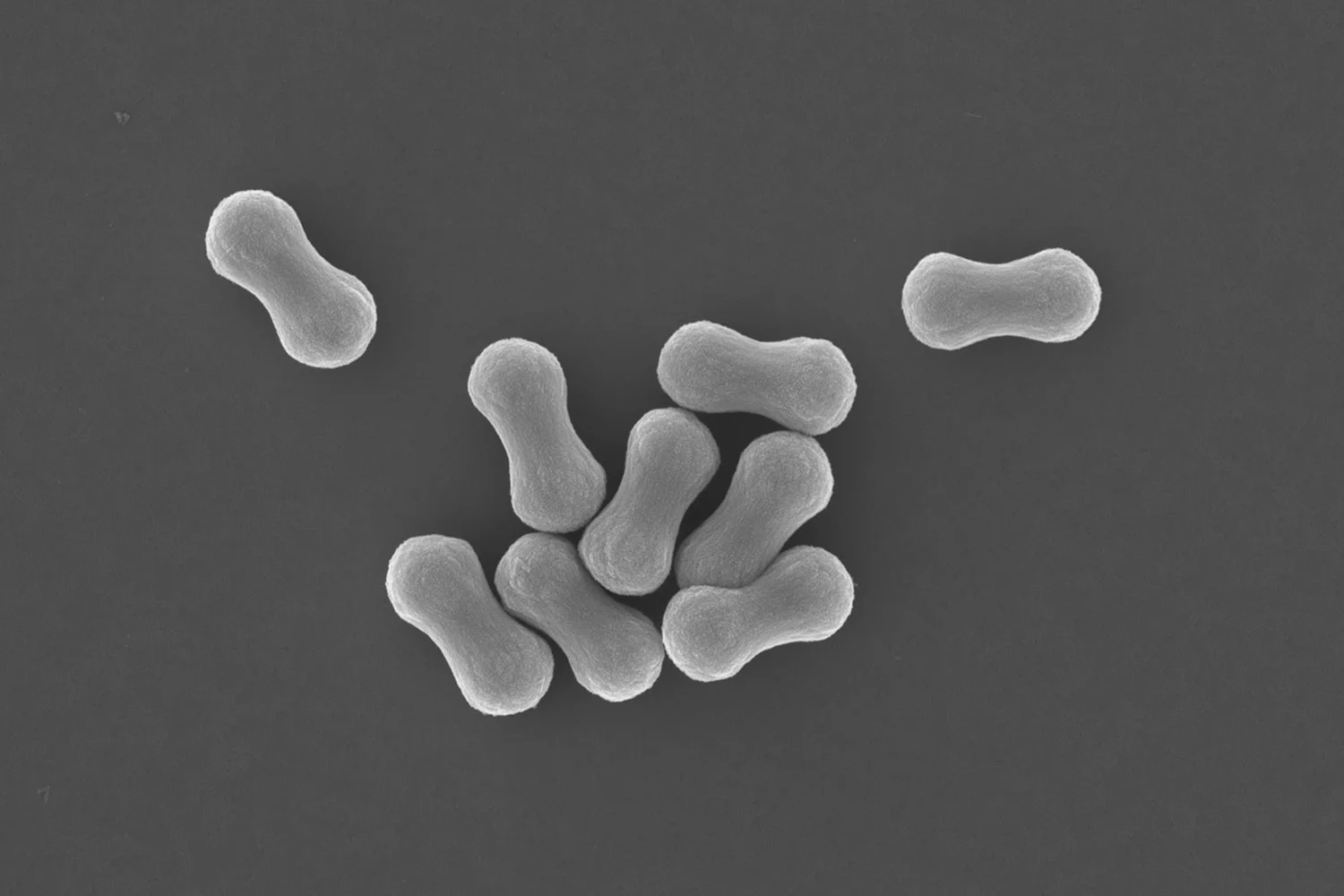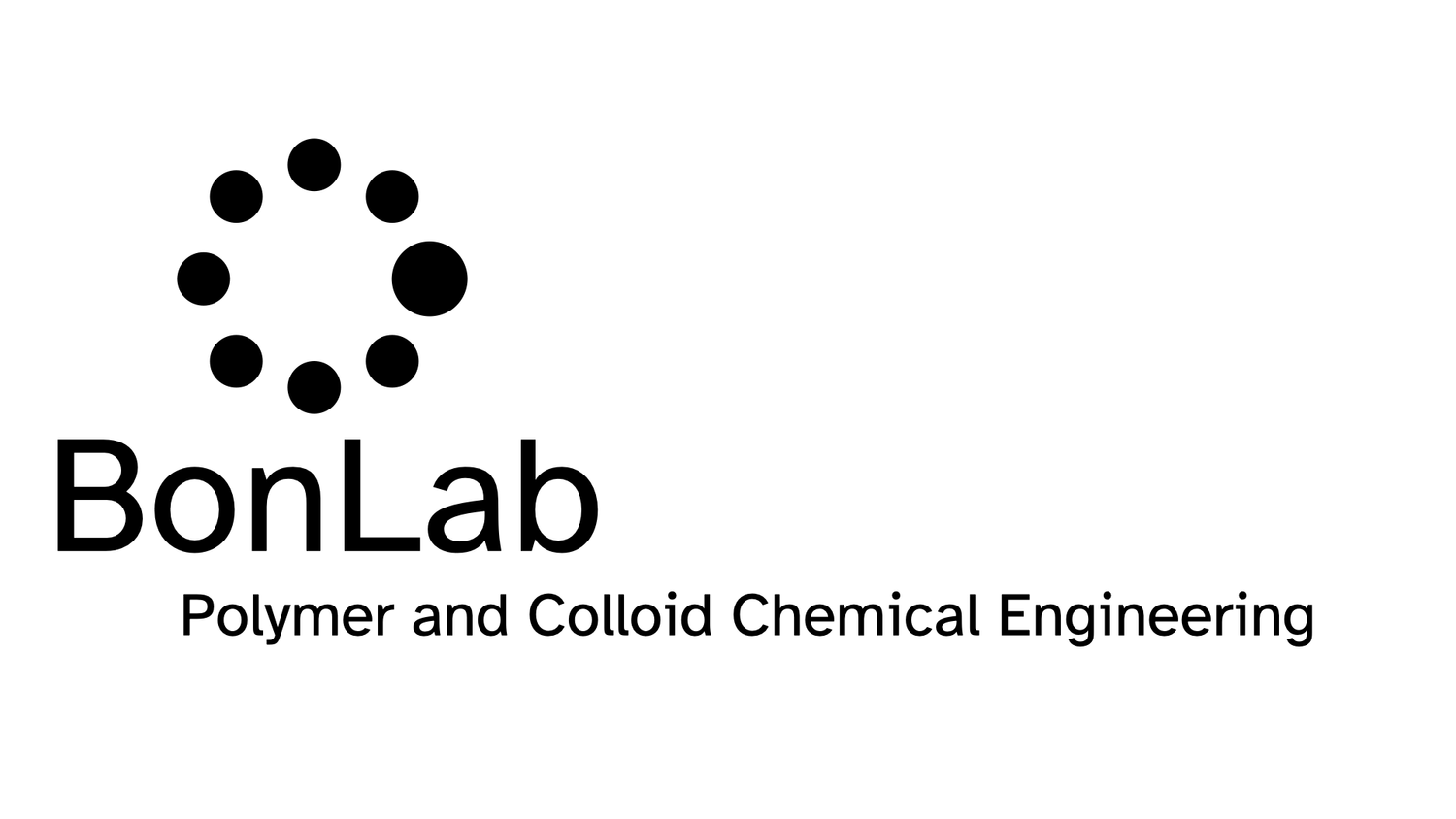
BONLAB BLOG
Thoughts
&
Scientific Fiction
A mechanistic investigation of Pickering emulsion polymerization
Emulsion polymerization is an important industrial production method to prepare latexes. Polymer latex particles are typically 40-1000 nm and dispersed in water. The polymer dispersions find application in wide ranges of products, such as coatings and adhesives, gloves and condoms, paper textiles and carpets, concrete reinforcement, and so on.
Conventional emulsion polymerization processes make use of molecular surfactants, which aids the polymerization reaction during which the particles are made and keeps the polymer colloids dispersed in water. We, and others, introduced Pickering emulsion polymerization a decade ago in which we replace common surfactants with inorganic nanoparticles.
In Pickering emulsion polymerization the polymer particles made are covered with an armor of the inorganic nanoparticles. This offers a nanocomposite colloid which may have intriguing properties and features not present in conventional "naked" polymer latexes.
To fully exploit this innovation in emulsion polymers, a mechanistic understanding of the polymerization process is essential. Current understanding is limited which restricts the use of the technique in the fabrication of more complex, multilayered colloids.
Emulsion polymerization is an important industrial production method to prepare latexes. Polymer latex particles are typically 40-1000 nm and dispersed in water. The polymer dispersions find application in wide ranges of products, such as coatings and adhesives, gloves and condoms, paper textiles and carpets, concrete reinforcement, and so on.
Conventional emulsion polymerization processes make use of molecular surfactants, which aids the polymerization reaction during which the particles are made and keeps the polymer colloids dispersed in water. We, and others, introduced Pickering emulsion polymerization a decade ago in which we replace common surfactants with inorganic nanoparticles.
In Pickering emulsion polymerization the polymer particles made are covered with an armor of the inorganic nanoparticles. This offers a nanocomposite colloid which may have intriguing properties and features not present in conventional "naked" polymer latexes.
To fully exploit this innovation in emulsion polymers, a mechanistic understanding of the polymerization process is essential. Current understanding is limited which restricts the use of the technique in the fabrication of more complex, multilayered colloids.
In our paper, recently published in Polymer Chemistry, clarity is provided through an in-depth investigation into the Pickering emulsion polymerization of methyl methacrylate (MMA) in the presence of nano-sized colloidal silica (Ludox TM-40). Mechanistic insights are discussed by studying both the adsorption of the stabiliser to the surface of the latex particles and polymerization kinetics. The adhesion of the Pickering nanoparticles was found not to be spontaneous, as confirmed by cryo-TEM analysis of MMA droplets in water and monomer-swollen PMMA latexes. This supports the theory that the inorganic particles are driven towards the interface as a result of a heterocoagulation event in the water phase with a growing oligoradical. The emulsion polymerizations were monitored by reaction calorimetry in order to establish accurate values for monomer conversion and the overall rate of polymerizations (Rp). Rp increased for higher initial silica concentrations and the polymerizations were found to follow pseudo-bulk kinetics.
The paper can be read here: http://dx.doi.org/10.1039/C7PY00308K
Independent responsive behaviour and communication in hydrogel objects
Autonomous response mechanisms are vital to the survival of living organisms and play a key role in both biological function and independent behaviour. The design of artificial life, such as neural networks that model the human brain and robotic devices that can perform complex tasks, relies on programmed intelligence so that responses to stimuli are possible. Responsive synthetic materials can translate environmental stimuli into a direct material response, for example thermo-responsive shape change in polymer gels or light-triggered drug release from capsules. Materials that have the ability to moderate their own behaviour over time and selectively respond to their environment, however, display autonomy and more closely resemble those found in nature.
Autonomous response mechanisms are vital to the survival of living organisms and play a key role in both biological function and independent behaviour. The design of artificial life, such as neural networks that model the human brain and robotic devices that can perform complex tasks, relies on programmed intelligence so that responses to stimuli are possible. Responsive synthetic materials can translate environmental stimuli into a direct material response, for example thermo-responsive shape change in polymer gels or light-triggered drug release from capsules. Materials that have the ability to moderate their own behaviour over time and selectively respond to their environment, however, display autonomy and more closely resemble those found in nature.
In our recent paper, published in Materials Horizons, we present soft hydrogel objects that possess an individually programmed time delay in their response to a shared environmental stimulus. We utilize the enzyme urease to programme a self-regulated change in pH, which in turn activates the designed response of gel disintegration. This design allows for independent response behaviour of a collection of hydrogel fibers which contain coloured oil droplets in a single closed system. In addition, we show that hydrogel beads can communicate with one another, hereby influencing their pre-programmed individual behaviour.
The incorporation of responsive time control directly into soft matter objects demonstrates an advance in the field of autonomous materials.
The paper can be read at http://dx.doi.org/10.1039/C7MH00033B
BonLab will be at the 2017 International Polymer Colloids Group conference this summer
We at BonLab are excited and looking forward to the 2017 IPCG meeting, this time organised by prof. Prof. Jose R. Leiza from the University of the Basque Country (Spain) and Dr. Willie Lau from Oriental Yuhong (China). Prof.dr.ir. Stefan Bon will give a masterclass on polymer colloids in the preceeding Gordon Research Seminar to an international audience of postgraduate students. He will also give an invited talk in the main conference with the tentative title: Dynamic Supracolloidal Engineered Materials
The International Polymer Colloids GroupConference (IPCG2017) will bring together world leading scientists to discuss the latest developments in the area of colloidal polymer science. The talks of the invited speakers will feature a balance of traditional and emerging applications for polymer colloids, including advanced colloid monitoring techniques, morphology and film formation, hybrid colloids, colloids for life and biotechnological applications, and engineering colloids.
The conference will take place in Arantzazu, which is a Sanctuary located in the town of Oñati in the Basque Country Region (Spain). The place benefits from the highland silence and peaceful atmosphere of the Aizkorri mountain range. The place is frequently visited by devotees (Virgin of Arantzazu) and tourists. Arantzazu is also a starting point for several mountains trails and circuits for hikers that provide access to the meadows of Urbia and on to the mountain range Aizkorri.
Stefan Bon previously chaired the 2015 IPCG meeting in New Hampshire, USA. More in this in one of our blog entries.







